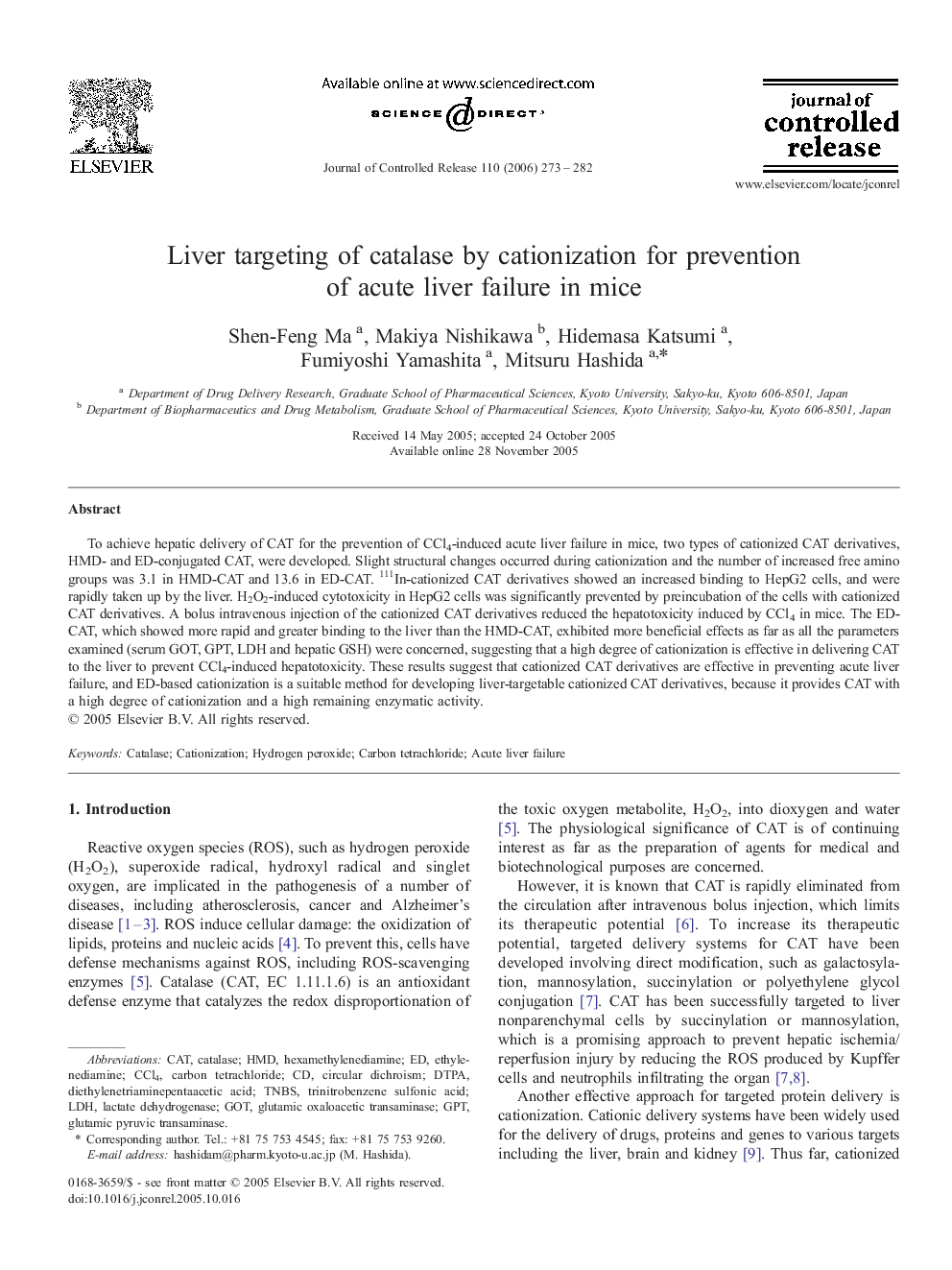| کد مقاله | کد نشریه | سال انتشار | مقاله انگلیسی | نسخه تمام متن |
|---|---|---|---|---|
| 1427727 | 986877 | 2006 | 10 صفحه PDF | دانلود رایگان |

To achieve hepatic delivery of CAT for the prevention of CCl4-induced acute liver failure in mice, two types of cationized CAT derivatives, HMD- and ED-conjugated CAT, were developed. Slight structural changes occurred during cationization and the number of increased free amino groups was 3.1 in HMD-CAT and 13.6 in ED-CAT. 111In-cationized CAT derivatives showed an increased binding to HepG2 cells, and were rapidly taken up by the liver. H2O2-induced cytotoxicity in HepG2 cells was significantly prevented by preincubation of the cells with cationized CAT derivatives. A bolus intravenous injection of the cationized CAT derivatives reduced the hepatotoxicity induced by CCl4 in mice. The ED-CAT, which showed more rapid and greater binding to the liver than the HMD-CAT, exhibited more beneficial effects as far as all the parameters examined (serum GOT, GPT, LDH and hepatic GSH) were concerned, suggesting that a high degree of cationization is effective in delivering CAT to the liver to prevent CCl4-induced hepatotoxicity. These results suggest that cationized CAT derivatives are effective in preventing acute liver failure, and ED-based cationization is a suitable method for developing liver-targetable cationized CAT derivatives, because it provides CAT with a high degree of cationization and a high remaining enzymatic activity.
Journal: Journal of Controlled Release - Volume 110, Issue 2, 10 January 2006, Pages 273–282